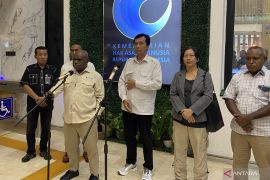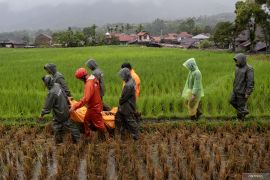This is what has drawn Europeans -- Portuguese, Dutch, and Spanish -- to come to Asia.
Before the Dutch made their presence in the archipelago in 1596, Portuguese sailors had set up a network of merchants to control the spice trade chain between the Maluku islands and Europe. The highly profitable trade continued to face the attack of Dutch seamen. This is since the King of Spain Philip II, a mortal enemy for the Dutch, inherited the Portuguese throne in 1580.
The rich and powerful trading company, Vereenigde Oost-Indische Compagnie (VOC), attacked Portuguese posts and routes across Asia to seize Portuguese ports, fortifications, or cities anywhere in India, Sri Lanka, Malaya, Maluku, and China.
After success for some 130 years in Malacca, the Portuguese surrendered to the Dutch troops and handed over Malacca to the Dutch.
After taking control of Malacca, the Dutch also conquered Maluku and Ternate from the Portuguese as their colonies.
After seizing control of Malacca and Maluku from the Portuguese, the Dutch made them prisoners of war.
The Dutch also brought the Portuguese as prisoners of war to Batavia. However, they are not original Portuguese after their integration with various nations in Africa, India, and Malacca.
The Dutch termed it "Black Portuguese," based on a book titled Tempat-tempat Bersejarah di Jakarta.
Adolf J. Heuken, the author of Tempat-tempat Bersejarah di Jakarta, stated that the Black Portuguese is the forerunner of the Portuguese community in Kampung Tugu.
Kampung Tugu was a Mardijkers settlement handed over for free by the Dutch during the 17th Century. The Mardijkers were Dutch prisoners of war in the Portuguese colony, who were taken to Batavia and known as the Black Portuguese.
Mardijker translates to being independent or someone set free. The Mardijker were the first to occupy Kampung Tugu, one of the oldest villages in Jakarta.
Aprelo Formes, 50, a resident of Kampung Tugu, when met around the Tugu Church, Cilincing, North Jakarta, remarked that the Kampung Tugu settlement was located in the Semper Barat Village area, which was an administrative area of the Cilincing Sub-district, North Jakarta.
Chairperson of Daily Organizer of the Church Congregation (PHMJ) of Tugu Church stated that Kampung Tugu was located around four kilometers southeast Tanjung Priok Port. When viewed from its geographical situation, Tugu Village is a lowland.
After gaining independence, the Mardijker occupied Kampung Tugu to reside. At the start, only 23 Mardijker families had occupied Kampung Tugu.
During that time, Kampung Tugu was still a forest and swamp area that was a hotbed of malaria mosquitoes and various other sources of diseases.
Survival for them there meant hunting wild animals, catching fish, and collecting forest products.
Formes pointed to Michiels, Andreas, Abraham, Quiko, Cornelis, and Browne being the six remnant Portuguese family names in Kampung Tugu.
Some 200 Portuguese descendants live here. Aprelo remarked that Michiels was the Portuguese family name of him and his mother.
However, Aprelo revealed that he cannot inherit the family name, as his mother had married an Ambonese.
This is the reason behind some Portuguese clans fading from Kampung Tugu, as the Portuguese naming system adhered to the Patrilinear line, or the father line.
He stated that the two remnant structures from the Portuguese family in Kampung Tugu were the Tugu church, built in the mid-18th century, and an old house, constructed around the mid-19th century.
After gaining freedom and being placed in Kampung Tugu, the Marjdikers, with priest Melchior Leydekker’s assistance, built a church that also served as the first school in Kampung Tugu.
Tugu Church was built facing the Cakung River, with a few of them across the Mardijker settlement.

Initially, only a vast swamp, though the Mardijker were able to turn it into a well-known settlement from the 17th century.
Kampung Tugu has currently also witnessed a significant change, transforming from a residential to industrial area and a container garage, Formes stated.
Traditions
On Jan 1, every year, the Kampung Tugu community follows the rabo-rabo tradition of celebrating New Year’s Day and deepening kinship.
"While adhering to the Rabo-Rabo tradition, we visit houses whose members have the Portuguese family name one-by-one whilst singing the Kroncong style music and dancing. For instance, after visiting Michiels' house, we go to other houses in Kampung Tugu and do the same things," Formes remarked.
Formes explained that rabo-rabo literally meant to follow while hinting at the action of people, who walk behind.
"The members of the houses that were visited will follow the entourage to the subsequent houses until the last one. They sing and play music in the Kroncong style in each house voluntarily," he stated.
Furthermore, the Kampung Tugu community follows another tradition called mandi-mandi.
The tradition is followed on the first Sunday of January at the complex of Tugu Church.
During the tradition, they smear white powder on one another’s faces to symbolize forgiveness after offering prayers at the church.
The greater the number of mistakes committed by someone in the past, the more the amount of powder would get smeared on his or her face.
Aprelo said that "mandi" literally meant an order to do good things during the next year.
During the rabo-rabo and mandi-mandi traditions, the Kampung Tugu community also welcomed other members of the community that followed different religions to participate.
"We also welcome Muslims and people following different religions to participate in the traditions," he remarked.
Meanwhile, Eugeniana Quiko, the fifth generation of the Quiko family, noted that the authentic culinary delights of Kampung Tugu will be on display during the rabo-rabo and mandi-mandi events.
"We display authentic culinary delights, such as pisang udang (shrimp-filled banana leaf-covered sticky rice cake), apem kinca (flower-like rice flour cake with palm sugar syrup), pindang bandeng serani, and gado-gado siram (peanut sauce on top of slightly boiled vegetables)," she stated.

"You will not be able to find kue pisang udang outside Kampung Tugu. You cannot find the similar culinary delight in another Jakarta area or outside Jakarta. Only in Kampung Tugu," she pointed out.
Despite piles of containers lying strewn on every side and the roar of trailer engines dominating the sights of Kampung Tugu presently, the situation, in no way, dampens the fervor of Portuguese descendants to maintain their traditions.
"If not us then who else would want to preserve our culture," Quiko concluded.
Related news: Looking closely at Chinese community in Jakarta
Related news: Indonesians in tunic dresses: Indian descendants in Pasar Baru
Related news: Pekojan Arab Village -- Standing the test of time
EDITED BY INE
Editor: Fardah Assegaf
Copyright © ANTARA 2019











